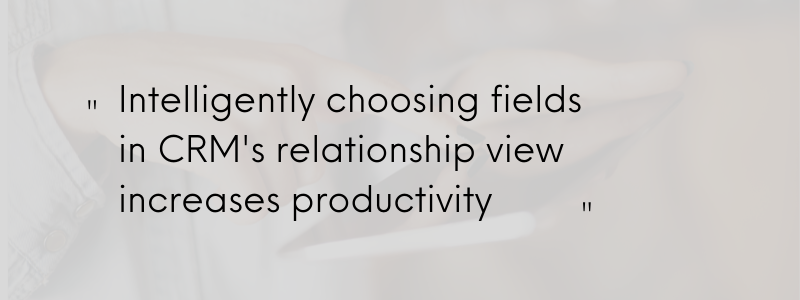CRM Development - Design aspects
While developing an enterprise application one of the key aspects which gets missed out is the UI/UX design. In this article we will look at key design considerations to keep in mind while executing a CRM development project.

Source - Author's own creation
Designing CRM application for usability
One way CRM is different from other applications is that people using the solution are always busy. They are either one the move meeting prospects or generating sales, or on phone interacting with them and resolving issues. Therefore, speed at which CRM moves define how fast can the customer facing team can operate.
It is therefore essential that the CRM not only loads fast and the screen elements can bring out the maximum information and interaction capabilities in a single window.
For example, let us look at an instance where a customer representative needs to log a service ticket. Usually when an inbound call is received from a registered number, the user gets a prompt with customer and related asset information. This relationship holds the key in bringing out the information in a single place.

Relationship between Account and Assets bring out the complete information of the Account in one shot.
Developing CRM to minimize clicks
As you must have imagined, minimizing the clicks is an inherent need of a fast CRM. Not only do users need snapshot of information in a single window but they want to interact quickly as well.
Hence in the above example, the customer support executive not only need to view account information but be able to create a service request in the same go. Having these interaction options in the same window dramatically reduces the navigation time.
Therefore if the customer was complaining about the exhaust machine with serial number 90E934 , the sales rep would see that information and inform the customer whether the equipment is under warranty. Having these key fields within the same screen drastically increase the productivity compared to the user having to navigate back and forth between Asset and Account details.
Hence in the relationship view, the most frequently referred to fields must be visible.

Designing Dashboards for action items
Dashboards are one of the most important elements of CRM Development projects. Whereas other aspects like automation and integration help improve system efficiency, it is also important to bring up the efficiency of users by helping them to remain on top of their action items.
For example, a sales rep would love to see the new leads assigned to him in a concise manner. Another example could be to show him his opportunities which are most likely to convert. This helps him focus his energy on the most important deals and meet / exceed his sales target.
Developing Reporting in CRM
The key difference between reports and dashboards is the whereas the latter are supposed to remain concise, the former must be detailed and cover all possible filters and information required by the users.
CRM Alert and Notifications
Another important aspect of interaction are the alerts and notifications being sent out from CRM. These could be SMS, emails, push notifications on mobile APP and more. The key design aspects in framing these are
a. The notifications must have a concise subject with most important details
b. They must have URL link to view more details.
c. Notifications templates must be used. They are helpful when you need to change the content of notification.

Learnings from the previous projects
CRM development and Design - Learnings
Following are some of the learnings we have had along the way when designing a CRM software solution.
Role based UI/ UX - Sometimes, to make the process efficient, you may need to brainstorm the user types who will be using the CRM application and design the solution as per their needs. It might so happen that same CRM object may need to have different representation for different user roles. This ensures that the application provides a degree of personalization to the logged in user.
UI Simplification - Whereas CRM can have tremendous amount of information stored in itself, it is very important no to overload the user interface with a lot of information. Having a lot of data brings down the ease of assimilation and hence the usability.
Iteration / Design Sprints - It is ok to make some mistakes. But more important aspect of designing is to listen to user inputs and make continuous improvements. Usually developing the solution in sprint is the best approach and takes care of aligning the application as per needs of the users.
Industry specific customization - Whereas every company is unique, there are some industry best practices. It is important to keep them into mind while developing the CRM application.
Keeping Design Flexible - It is important to keep design flexibile. This helps the company make changes as per needs evolve with time.
Conclusion
While designing enterprise applications, care must be taken to improve UI/UX not only from presentation point of view but also by considering usability. By having the right relationships, key fields visible without screen navigation, efficient dashboard and reporting it is possible to make a tremendous impact on the user experience.


